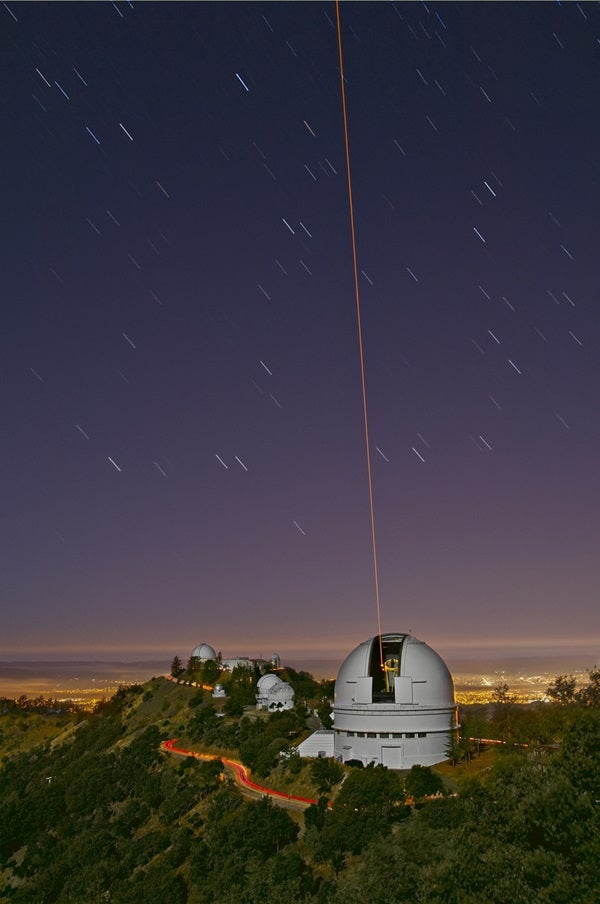But 127 years later, the founder’s fortune is long exhausted. Now, Google, which built its monument to itself in nearby Mountain View, has stepped up to help the struggling neighborhood observatory solve its funding problems. The tech titan is giving Lick $1 million. In recent years, that same amount had been slashed from the observatory’s former $2.5 million annual budget, forcing telescopes to be left dormant at times due to staff shortages.
The donation is just the latest turn in a sharp change of fortune for Lick, which seemed destined to close only months ago.
Lick isn’t the most modern facility, but its importance is vital to the astronomers and graduate students who observe there. Many of the University of California’s more than 100 astronomers use Lick’s telescopes as a test bed for new instruments as well as for time-intensive research projects that are impossible on more modern instruments where nights are precious. UC astronomers also see Lick as an invaluable part of efforts to train both undergraduate and graduate students, who wouldn’t have a chance at spearheading projects on larger telescopes.
“Google’s very generous gift will make it possible for Lick to provide these opportunities and to continue to develop forefront tools such as adaptive optics, which removes image blurring caused by turbulence in Earth’s atmosphere,” UC Observatories Director Claire Max said in a prepared statement released today. Her office is in charge of operating Lick and the UC’s share of the W. M. Keck Observatory in Hawaii.
Adaptive optics — now the backbone of the world’s largest telescopes — was essentially invented on Mount Hamilton. Most of the first 100 exoplanets were also discovered here. And dark energy was initially seen through extensive observations of distant supernovae made at Lick Observatory. Those lines of research are still the most active.
That legacy appeared likely to come to an end in 2013 when the UC’s Office of the President decided to defund Lick Observatory amid massive system wide funding cuts and shifting priorities. The state had hacked the UC’s budget right as its astronomers geared up to partner in the more than $1 billion Thirty Meter Telescope project.
“We never said that we were going to close Lick or that we wanted to close Lick,” UC Provost Aimée Dorr
said in a recent interview with Astronomy. “We did say that we did need to find a different funding model for Lick based on what the UC astronomy community identified as priorities, what they said about how much money they had and how much they could afford.”
Lick’s greatest champion, astrophysicist Alex Filippenko, didn’t see things that way. He went on a war path to make sure Lick had the funds needed to operate. Ultimately, everyone from astronomers to members of the California congressional delegation protested the move, which drew news coverage around the country. That public battle ended in November when Dorr rescinded the letter she initially sent announcing Lick funds would run out in 2018.
That policy shift almost immediately netted donations for Lick. Within weeks, Filippenko secured a donation of $350,000 from the Heising-Simons Foundation, as well as the Kast family, for a major upgrade of the Kast Spectrograph, which is attached to the 3-meter Shane Telescope and used for a broad array of research.
And now Filippenko has garnered Google’s $1 million contribution. He says he hopes the high-profile gift will convince others to donate as well. Astronomers will need additional private funds to continue research efforts because while university officials will no longer stop UC Observatories from paying for Lick, the UC also isn’t providing any additional money to do so.
“To maintain and expand Lick in the long run, we would like an endowment of something like $50 million,” Filippenko told Astronomy in a recent interview. The observatory would use the interest from the investment as annual operating funds and expand its roles in research and outreach.
One of the first uses for the funds will be hiring another telescope operator. The donation also will likely contribute to Lick’s efforts to improve adaptive optics — technology that will soon be a fundamental part of the UC’s next-generation instrument, the Thirty Meter Telescope.
“I hope this is the beginning of many gifts recognizing Lick Observatory’s important role in inspiring future scientists and adding to our understanding of what lies beyond our solar system,” said California Congresswoman Zoe Lofgren, who spearheaded legislative support for the observatory.










